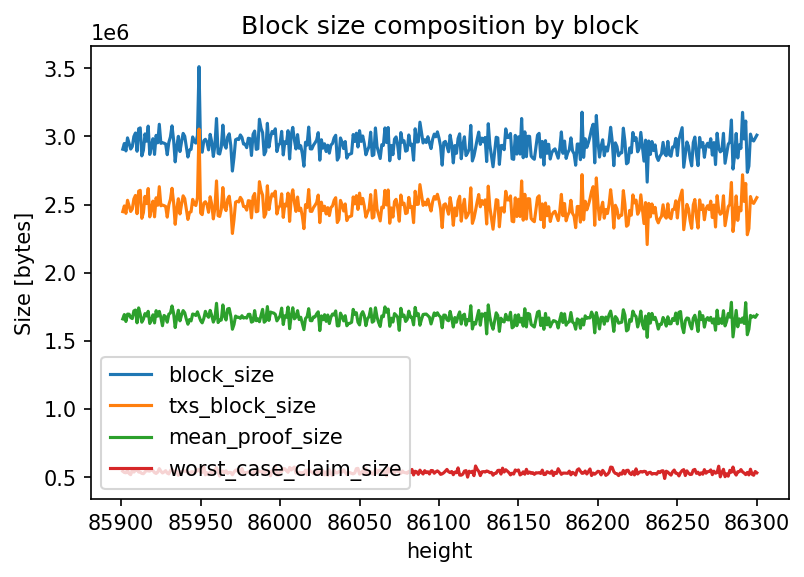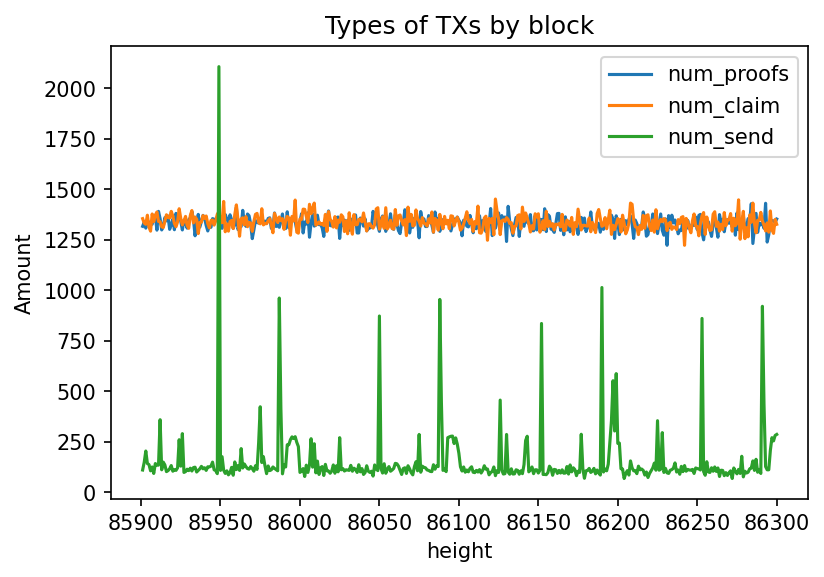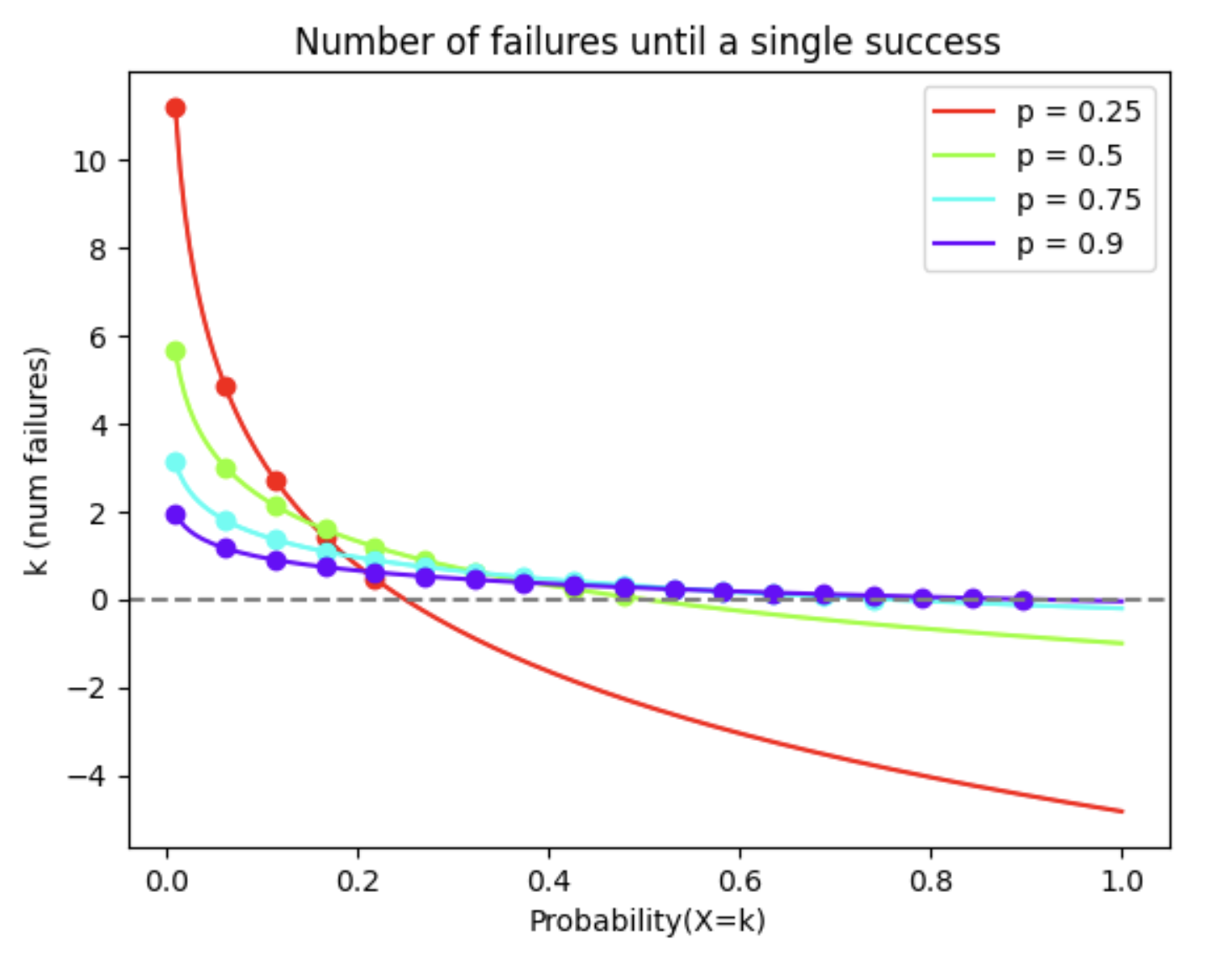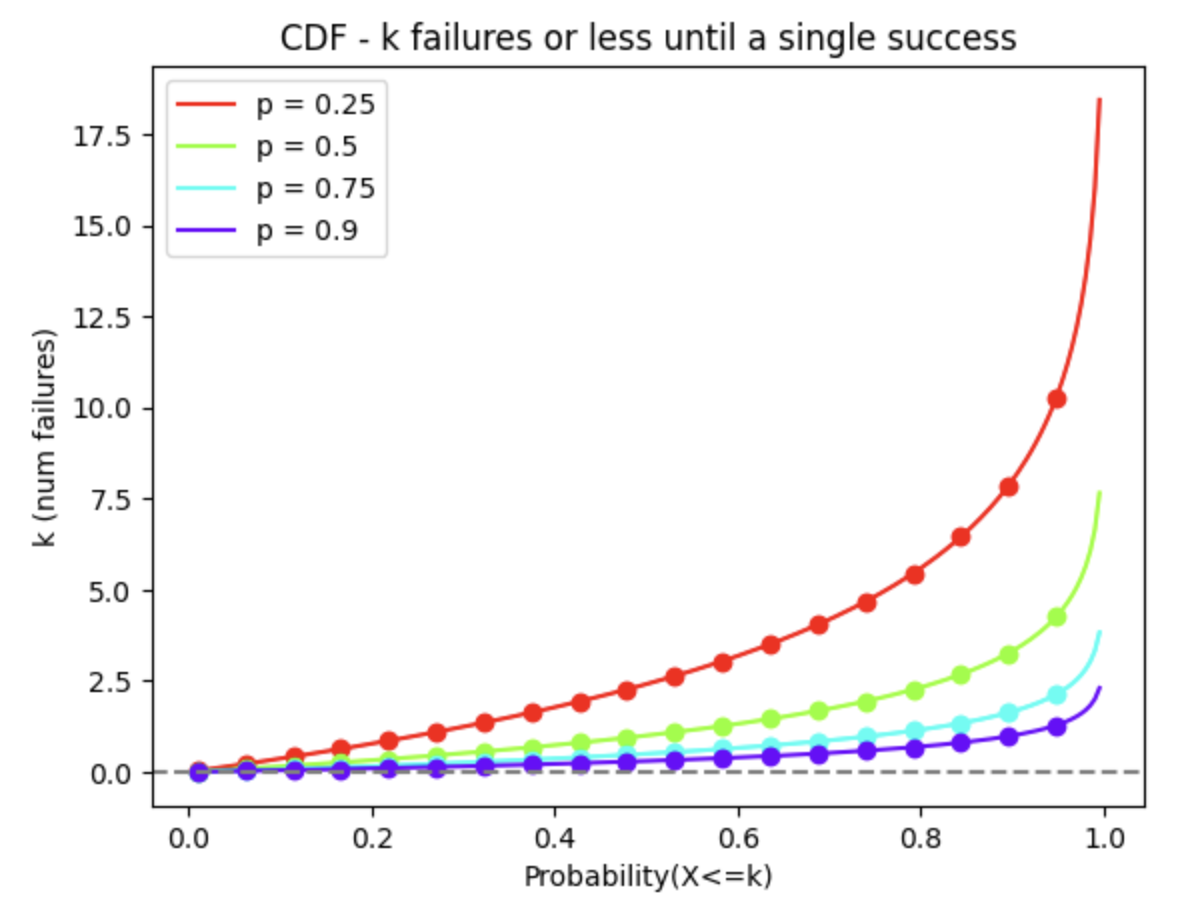Probabilistic Proofs (Morse)
This document was copied over from the pocket-core repo for reference until Probabilistic Proofs are in production. Please see Probabilisti Proofs (Shannon) as the primary source of truth.
This is a specification & proposal that will be submitted to forum.pokt.network after peer-review.
tl;dr Values Selected
Pr(X<=k)=0.99; selected manually to maintain 2 nine protocol safetyk(num failures) =16; computed using a cumulative geometric probability distributionProofRequestProbability=0.25; selected manually to scale the network by 4xProofRequirementThreshold=20 POKT; selected to a value that is above p95 of all POKT claimsProofMissingPenalty=320 POKT; calculated viaProofRequirementThreshold * kto deter malicious behaviour
The question being answered by the distribution: What is the probability of the protocol trusting (i.e. failing) k Claims or less (i.e. handling a normal claim or not catching an attacker) until a single penalty enforcement (i.e. successfully catching an attacker).
Answer: Selecting k = 16 and ProofRequirementThreshold = 20 POKT implies that if an attacker continues submitting claims for 19.99 POKT or less, they will get caught 99% of the time, and will be penalized for 320 POKT.
Table of Contents
Summary
The number of relays in Pocket Network (V0) is limited by the amount of block space utilized by Claim Proofs. The estimations done here approximated it to be ~3B/day.
Several solutions were proposed in this document. This proposal outlines an alternate solution: Probabilistic Proofs.
In order for Servicers to be rewarded for their work, a fraction of the Claims submitted on-chain will require a Proof to also be submitted-on chain probabilistically under the random Oracle model.
This document assumes the reader has an understanding of the reward protocol.
Specification
Governance Parameters
Three new governance parameters will need to be added:
ProofRequestProbability: Probability that a Claim will require a Proof to be rewarded; x ∈ ℝ ∣ 0 < x ≤ 1ProofRequirementThreshold: Claim amount (in uPOKT) above which a Proof will always be required; x ∈ ℝ ∣ x > 0ProofMissingPenalty: Burn (in uPOKT) that the Servicer faces if it does not provide a proof withinpocketcore/ClaimExpirationfor a Claim it previously submitted; x ∈ ℝ ∣ x > 0
Parameter Usage
Flow
The high-level flow is captured in the following diagram:
Scaling Benefits
Assuming the majority of the block space is taken up by Proofs, The number of relays in the network scales inversely to ProofRequestProbability. Example:
ProofRequestProbability= 0.5 -> 2x scale (~6B relays)ProofRequestProbability= 0.25 -> 4x scale (~12B relays)ProofRequestProbability= 0.1 -> 10x scale (~30B relays)
Side benefit: It has been shown that the majority of block verification time is spent validating the Proofs, so there would also be an upside on resource consumption. Showing backing data for this is outside the scope of this document.
Block Data Verification
The notebook here originally authored by @RawthiL in this gist captures the that the Block Size composition is approximately:
- Proofs : 67.06 %
- Claims : 21.64 %
This goes to show that reducing the number of Proofs & Claims submitted on-chain would increase the capacity of the network.


Attack Modeling
In order to select the values for the three parameters, the attacker's likelihood of adversarial reward & penalty must be modeled.
Approach
An attack by example approach is used determining the appropriate values for ProofRequestProbability, ProofRequirementThreshold and ProofMissingPenalty. This will demonstrate the optimal malicious behaviour an attacker should follow and tend to that case.
Definitions
A Bernoulli probability distribution will be used whereby each Claim & Proof pair can be treated as an independent Bernoulli Trial. When the Claim exceeds ProofRequirementThreshold, the model is "short-circuited" and is therefore outside the sample space for this definition.
The definition for success is taken from the Network's point of view.
- Success: Servicer submits a false claim and gets caught
- Failure (the remainder of the sample space excluding Success):
- Servicer submits a true claim and is required prove it
- Servicer a true claim and have no requirement to prove it
- Servicer submits a false claim and gets away with it
- Servicer submits a true claim, but fails to prove it
Example
Let ProofRequirementThreshold = 100 POKT
If the Claim is greater than or equal to 100 POKT, a proof is mandatory and the model is "short-circuited". Therefore, the attacker can freeload by submitting claims for 99.99 POKT and hope they never get caught. If they do get caught (i.e. Success), the burn (i.e. ProofMissingPenalty) should exceed the total reward accumulated.
Since each claim is independent, an attacker would never submit a Claim exceeding ProofRequirementThreshold, and therefore have a ProofRequestProbability likelihood of being required to submit a proof.
Model
A Geometric PDF was selected to identify the probability of k failures (sample space containing an attacker getting away) until a single success (an attacker is caught).
However, as pointed out by @RawthiL, what we're actually interested in is the likelihood of k or less failures until a single success.
Geometric PDF

Geometric CDF

Selecting Values
Calculation
ProofRequirementThreshold should be as small as possible so that most such that most Claims for into the probabilistic bucket, while also balancing out penalties that may be too large for faulty honest Servicers. Ideally, it should be selected to be 2σ above the Claim μ such that 97.3% fall into the ProofRequestProbability part of the piecewise function. However, as seen in the Appendix, the POKT Claim distribution does not follow a normal distribution. Instead, 20 POKT was selected since it is greater than p95 of POKT claim using the data collected.
ProofRequestProbability (p) is selected as 0.25 to enable scaling the network by 4x.
BurnForFailedClaimSubmission - Should be set to k * ProofRequirementThreshold to deter k failures or less.
Pr(X<=k) must be as high as possible while keeping k reasonably low since it'll impact the penalty for honest but faulty servicers that fail to submit a Claim within the expiration window. We are selecting Pr(X<=k) = 0.99
Selecting k = 16 implies that 99% of the time, an attacker will get a penalty of BurnForFailedClaimSubmission, making it not worthwhile to take the risk.
Dissenting Opinions
Malicious Attackers Bloating State
Q: Adversarial actors may continue submitting Proofs in excess of what's required to bloat the state of the chain.
A: In the Random Oracle model, only pseudo-randomly selected Claims seeded by on-chain data (e.g. LastBlockHash, hash(claim), ServicerPubKey, etc...) will be included by block proposers.
Honest Servicers Getting Burnt
Q: An honest Servicer that submitted a Claim, but failed to submit a Proof within pocketcore/ClaimExpiration will be burnt. In today's model, they will only lose the rewards for the unproven Claim.
A: The onus is on the Servicer to upkeep their infrastructure. This is a tradeoff that must be considered as a risk/reward in exchange for the network's growth.
Appendix
Claim Data
The claim data below was collected by @RawthiL here.
| Percentage | Limit |
|---|---|
| 25.0 | 1.010101 |
| 50.0 | 2.525253 |
| 75.0 | 5.555556 |
| 90.0 | 16.161616 |
| 95.0 | 18.181818 |



Python Code
Python Code - Geometric PDF
import numpy as np
import matplotlib.pyplot as plt
from matplotlib import cm
def pdf(x, p):
return np.log(x/p) / np.log(1-p)
# Line Graph
x = np.linspace(0.01, 1, 200)
# Points
xp = np.linspace(0.01, 1, 20)
# Plot the actual functions
ps = [0.25, 0.5, 0.75, 0.9]
colors = cm.get_cmap('hsv', len(ps)+1)
for i, p in enumerate(ps):
color = colors(i)
y = pdf(x, p)
yp = pdf(xp, p)
plt.plot(x, y, label=f'p = {p}', color=color)
# Select only the points where y > 0 and plot them as dots
x_pos = xp[np.where(yp > 0)]
y_pos = yp[np.where(yp > 0)]
plt.plot(x_pos, y_pos, 'o', color=color)
# Add a horizontal line at y = 0
plt.axhline(y=0, color='gray', linestyle='--')
# Add legend, axis labels, and title
plt.legend()
plt.xlabel('Probability(X=k)')
plt.ylabel('k (num failures)')
plt.title('Number of failures until a single success')
# Display the plot
plt.show()
Python Code - Geometric CDF
import numpy as np
import matplotlib.pyplot as plt
from matplotlib import cm
def cdf(x, p):
return np.log(1-x)/np.log(1-p)
# Line Graph
x = np.linspace(0.01, 1, 200)
# Points
xp = np.linspace(0.01, 1, 20)
# Plot the actual functions
ps = [0.25, 0.5, 0.75, 0.9]
colors = cm.get_cmap('hsv', len(ps)+1)
for i, p in enumerate(ps):
color = colors(i)
y = cdf(x, p)
yp = cdf(xp, p)
plt.plot(x, y, label=f'p = {p}', color=color)
# Select only the points where y > 0 and plot them as dots
x_pos = xp[np.where(yp > 0)]
y_pos = yp[np.where(yp > 0)]
plt.plot(x_pos, y_pos, 'o', color=color)
# Add a horizontal line at y = 0
plt.axhline(y=0, color='gray', linestyle='--')
# Add legend, axis labels, and title
plt.legend()
plt.xlabel('Probability(X<=k)')
plt.ylabel('k (num failures)')
plt.title('CDF - k failures or less until a single success')
# Display the plot
plt.show()